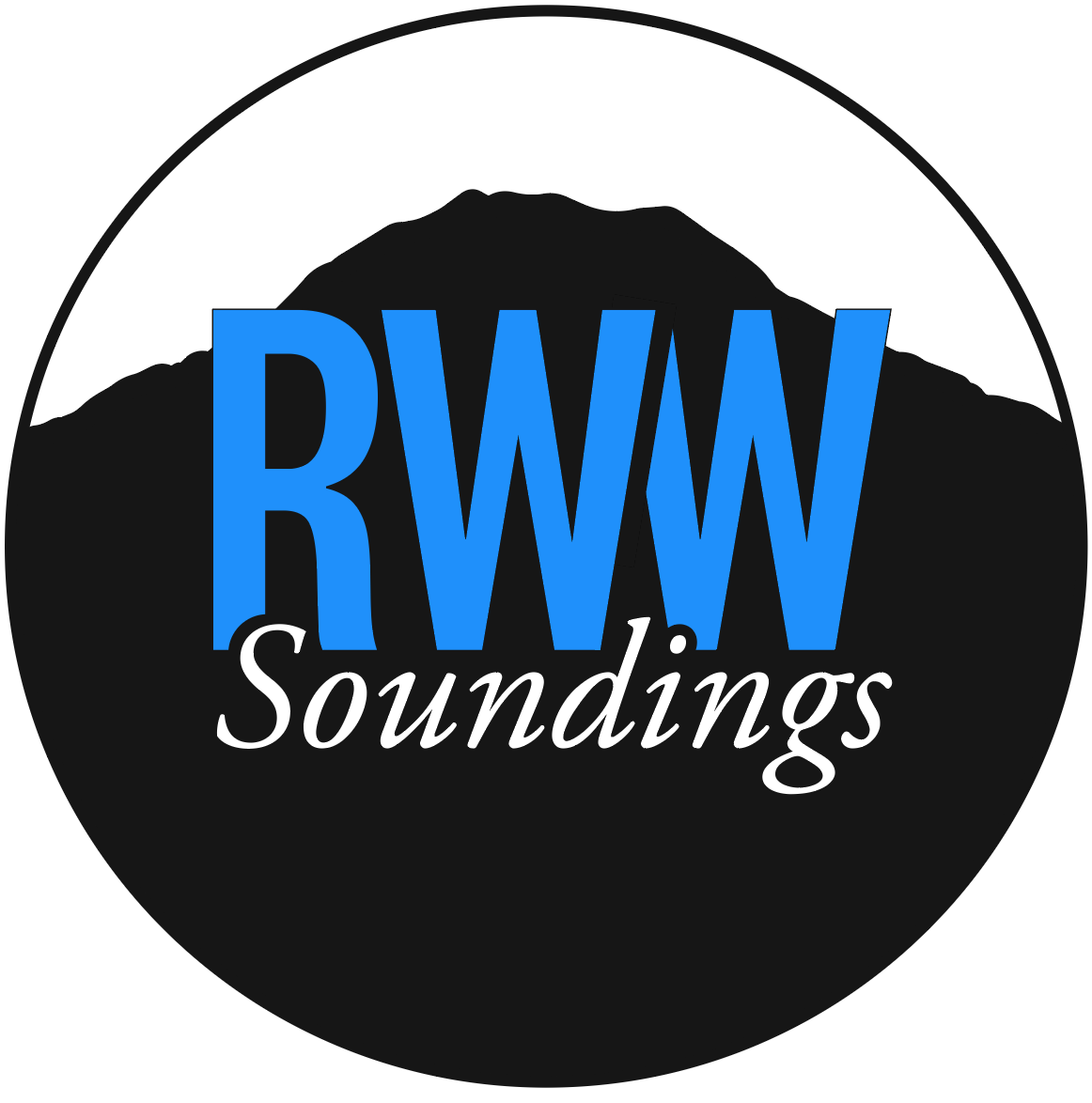Spring 2018
3
In It for the Long Haul:
Debbie Clarke Moderow and Her Journeys as Dog Musher and Writer
Lisa Morin Carcia
Contributing Writer
Class of 2018
In It for the Long Haul:
Debbie Clarke Moderow and Her Journeys as Dog Musher and Writer

Lisa Morin Carcia
Contributing Writer
Class of 2018
Lisa Morin Carcia
Contributing Writer
Class of 2018
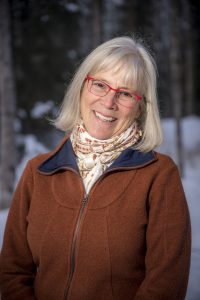
Photo by Mike Conti.
RWW alumna Debbie Clarke Moderow (2013) has blazed quite a trail since her graduation. Her first book, a memoir she completed for her creative thesis at RWW, was published by Houghton Mifflin Harcourt in 2016. The softcover edition will be published by the Boreal Books imprint of Red Hen Press in June 2018.
Fast into the Night: A Woman, Her Dogs, and Their Journey North on the Iditarod Trail tells the story of Moderow’s Iditarod races in 2003 and 2005—the challenges of training and preparing for the grueling event, her fierce bond with her sled dogs, the harshness and beauty of the Alaskan winter, and the ups and downs of sustaining her relationship with her huskies on the trail. More than an Iditarod story, though, Fast into the Night explores the relationship between Moderow’s life as a musher and her life as a mother, athlete, daughter, wife, and devotee of the great outdoors.
Working with RWW mentors Gary Ferguson, Brenda Miller, and Dinah Lenney, Moderow crafted a memoir that brings each of her Alaskan huskies to life as an individual character and affirms the power of the human-canine bond to heal emotional wounds. She writes of facing her fears and chasing adventure, sustained by the love of three generations of her family. The book won the 2016 National Outdoor Book Award for Outdoor Literature and the 2017 WILLA Award in the creative nonfiction category.
I spoke to Debbie by phone from her cabin in Denali Park in January 2018.
![]()
Lisa Morin Carcia: I'm thinking about your journey as a writer. You’ve said in other interviews that when you finished the 2005 Iditarod you knew that you wanted to write a book, which tells me you were already seeing yourself as a writer. Could you tell me a bit about your writing journey prior to those Iditarod races?
Debbie Clarke Moderow: Because I went to Princeton, a thesis was required for graduation. I was an art history major, and I wrote a pretty serious, several-hundred-page document about art between the two wars: early twentieth-century art, the Dada movement. After college I worked at a grassroots conservation organization in Wyoming, where I composed and produced their newsletters. I've always kept a journal. And I knew that when I had a chance—when my very intense motherhood years came to an end—that I wanted to do something creative, and writing was my natural go-to place as an art form. And so it was mid-Iditarod journey, which spanned a few years, when I realized that I was living something I knew was bigger than I could make sense of at the time.
I really wanted to write a book, but I did not know what was involved; I mean, I was very naïve. I figured, oh, it might take me three, maybe four years . . . It was probably five years into the effort that I recognized that if I had the opportunity, I really ought to go back to school and become a better writer.
LMC: What made you decide to take that step of pursuing an MFA, and why did you choose Rainier Writing Workshop? And it sounds like you were working on the book for about five years. Could you say a little more about what it was about the experience of working on it on your own that told you that you needed to go back to school?
DCM: When I finished Iditarod and knew I wanted to write, I decided to attend some writers’ workshops—that way, I could try to fine-tune the craft. I went to Aspen Summer Words, the Kachemak Bay Writers’ Conference, and the Wrangell Mountains Writing Workshop. In Aspen, I worked briefly with Gary Ferguson, who ended up being my first-year mentor. So right away, I didn't know it, but I was on my way to Rainier.
At every writing workshop I went to, if there was the opportunity, I sat down with agents and editors, and they all were encouraging about the story I had to tell. But they all started telling me what they wanted me to write. And eventually I found that incredibly frustrating, because clearly I hadn't found my own story yet in a way that was convincing on the page. In 2008, at Kachemak Bay, I met an agent who was very interested in my work. He started telling me, “I want to know more about Iditarod culture,” or “I want to know about this from the point of view of a woman in a man’s world.” And I thought, “Darn it, I am gonna leave here and I’m gonna write my book and I’m gonna figure out how to write my story. And I'm not talking to the industry again until I have something to show them that I can really stand tall about.”
I also tell people frequently that it was harder to write the book than to run Iditarod.
LMC: What was harder about it?
DCM: I say that a little bit tongue in cheek, and there were many similarities. I think running the Iditarod and writing the book were both a matter of finding confidence in myself, to believe that I could do what I was setting out to do, and to do it my way.
When I ran Iditarod, I’d been in the sport for fourteen years. I might not have ever traveled 1,100 miles by dogsled before, but I’d done a lot of racing and had developed our family kennel. I was better prepared to run Iditarod than I was to publish a memoir.
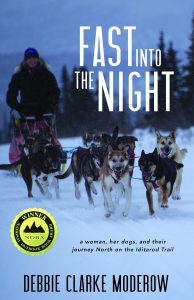
Book cover photo by
Eva Capozzola.
LMC: In Fast into the Night you're describing your experiences on the trail, and you're totally focused on getting yourself and your huskies from checkpoint to checkpoint healthy and safe in extreme conditions, including extreme sleep deprivation. And I'm imagining you probably didn't have a lot of time to take notes or keep a journal or anything like that. So I’m curious to hear about how you reconstructed your experiences on the trail when you were writing the book.
DCM: Well, every time something big happens to me in life, I process it by writing it down; so with this race, and with other races before it like the Copper Basin and even the kids’ races, I journaled what happened and tried to tease the meaning out of it. When I got home after both my Iditarods, I wrote for several weeks.
To write accurately about something that happened while totally sleep-deprived is a tricky business. What actually happened and how I remembered it sometimes did not match. For example, there are passages in the book in which, in early drafts, I described mushing in darkness or being worried about nightfall. When consulting the formal race records of when I checked in and out of checkpoints, I realized that the experience might have been frightening, but it actually took place in broad daylight. The story, of course, is driven by my memory of the events—but I also double-checked data points to piece it all together as best I could.
LMC: You graduated in 2013, and Fast into the Night came out in 2016. How did Fast into the Night find its way to publication with Houghton Mifflin Harcourt?
DCM: Every year after residency, I would go home so fired up to write. As soon as I graduated, I revised my thesis with the goal to pitch it to an agent. So by December or early January of 2014, I felt like I had a manuscript that I was ready to hold out to a critical industry eye.
After indulging in the craft of writing for three years at RWW, I needed to face the hurdle of publication. After all, we do need readers for our work! At first it felt daunting to try to figure out the difference between a big and small press or how to find an agent. I kept it simple and followed the advice of a friend who said, look, there are a million agents, and there are a lot of publishing houses out there. What you need to do is find the right fit. If you know people who write and have agents or editors that appreciate Alaska, or adventure, or women's stories, or whatever, see if you can find common ground and pitch to them.
A fellow author in Alaska encouraged me to send his agent my manuscript. I resisted for months, telling him it wasn’t ready. Finally, he convinced me that I had nothing to lose. Within a few days of receiving the manuscript, the agent called me to say she’d like to represent me. Within a month my memoir was sold to HMH.
This quick success was more logical than it sounds. My agent represents five Alaskan authors and has a deep understanding of Alaska. She trusted the recommendation from my peer, she’s a dog lover, and she had long worked with the editor at HMH, who has published multiple books about sports, the outdoors, and dogs. It’s true: there are a lot of agents out there and a lot of editors. Finding the right person can be like finding a needle in a haystack. If you strategize and try to winnow away where that needle might be, you can save a lot of time. I was fortunate to know somebody who understood my story and who had an agent perfectly suited to believe in my book and send it out into the world.
I'm pretty independent minded, but I learned the importance of networking with other writers. As writers, we are each other's best allies. By asking questions of one another, it’s possible to find the way into the very complicated and ever-changing landscape of publishing.
LMC: That's great advice. Tell me a bit about the book tour. How did that come about?
DCM: The marketing team at Houghton Mifflin Harcourt asked me if I wanted to go on a book tour. They emphasized that the size of the audience mattered less than the press generated by my visit to the city, and they basically interviewed me to see if I would be the type of person that would like to go. I thought of it as a celebration of something I'd worked on for a long time. I stayed with friends, I flew on miles, and then my publisher set up each bookstore presentation and coordinated publicity in each location.
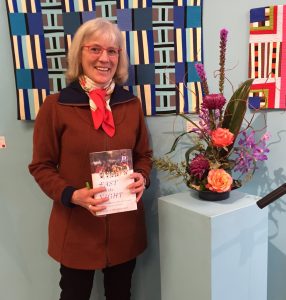
You know, I’m lucky; people love dogs, and they're interested in Iditarod. Lots of schoolkids all across the country have studied the race and they’ve communicated with mushers. Fast into the Night was particularly well suited for a lower-forty-eight book tour. Now I'm writing more about climate change and threats to our sacred wilderness landscape. If I’m successful in publishing another book about Alaska, it might demand a very different postpublication effort.
LMC: Anything else about the book tour or meeting readers?
DCM: I think back on it very fondly; it was hard work, but when you're sixty years old and you've just published a book for the first time and there's a lot of your own self on the page, you do think, “God, why have I just put all of this stuff about me out there?” When I was writing the book, I told Scott Russell Sanders, a wonderful writer who was a big influence on me, “I’m sick of me. I can’t believe anyone wants to read all this stuff about me, and how I lost contact with my dogs and blah, blah, blah.” His response made a big impression. He said, “Debbie, you've got to go deep into your own experience to be able to elevate that story to a higher universal plane. You have to go really deep or you're not doing anything. And keep going, because that's what you have to do.” I believe in that now, and I believed in it when the book came out, but you still feel like, wow, this is sort of wild that my little life on the runners of the dogsled, and in other areas as well, has just gone public.
But to look people in the eye, to have them say, “Thank you for writing this book,” and then to tell you about their own miscarriages (because I write about the profound effect my miscarriages had on me) or to tell you about their dog or their relationship with their parents or any of that, really brought home to me that we write for readers. That's really the bottom line. It doesn't have to be a lot of readers, but whatever you write, make sure somebody reads it and engages with you about it, because that's really the heart of what we do.
I feel so fortunate to have been able to go out around the country like that. That said, I don't think everybody has the means or the time to go on a book tour, and there are other ways to connect with readers. You can Skype with readers, you can write letters to readers, you can talk to readers on the phone; through your website these days you can have a great dialogue with readers. My daughter’s got a book out right now—and she has a young child and she works, so she can’t go on a book tour. But she’s doing other things one-on-one to connect with readers. So there are lots of different ways to connect.
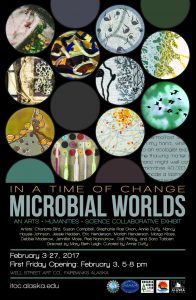
LMC: You mentioned some of the work you're doing now, having to do with climate change and place-based writing. And you recently participated in the arts, humanities, and science consortium “In a Time of Change: Microbial Worlds.”
DCM: That was a totally different adventure, to participate in a two-year arts-science collaboration. I'm scared of formal science labs—it's just not my thing. But I always knew that if I was going to write about this landscape, I had to write about what's happening to it. And I mean, basically, it's melting. At the most rudimentary level, it's all about water, and thawing; and to go into a microbiology lab and really get in the weeds about what that means was very enlightening for me. To take part in this collaboration was also another example of finding my voice. At the conclusion of the program, I wrote an essay, “The Narrow Line.” By that time, I understood that as an artist and writer I have much in common with the scientists—and most important, my voice really matters. We have to talk to the scientists, because they aren't going to change this world on their own. Their role is different. And if we don't ask questions of them and engage with them, we're losing out on a connection that will make a tremendous difference.
I’m also working on two longer projects about revisiting personal landscapes in the context of change: personal change and climate change. One project is what I hope will be a longer memoir about returning to three different landscapes I experienced during different stages of my life. And I'm also writing a shorter, book-length work about losing my brother and processing that loss in the context of the bird migration as it arrived and passed through Anchorage last spring. The seeds of that narrative actually started at RWW, both with an essay about my brother that I wrote and polished during my third year and with my Outside Experience that had to do with writing about birds and the migration. So yeah, the words I strung together on the page in Tacoma live on in my current writing.
LMC: Is there anything we didn’t talk about that you’d like to add?
DCM: Well, what I really want to convey is my profound gratitude that I went to RWW. I mean, I wouldn't be a published author if I hadn't done that. I think the role of the writer is incredibly important right now. That’s always been true, but I feel both grateful and responsible right now to put my voice on the page. Because I think art is really important, and it's under fire right now.
RWW was such a great program because of its profound generosity of spirit. Judith [Kitchen] and Stan [Rubin]’s vision [was] to accommodate people who were living real lives, which I was living at the time (and still am living!), and to have a chance to go to school with people of all different ages and all different professions, and have it be a different academic environment than most. I know that since they've left, the program is thriving, and I think that's wonderful.
Really and truly, the writing I started there is still the raw material of future writing for me, there's no question. It's the foundation for, hopefully, two new book-length manuscripts I'm working on. After graduation I was also in a writing group of fellow RWW alums. My years at RWW represented a very special time, and I came away from it feeling like it was the best thing I've ever done.
_
This interview has been edited for length and clarity.
_
Debbie Clarke Moderow and her husband Mark live in Anchorage and in Denali Park, Alaska. Debbie received a BA from Princeton University in 1977 and an MFA in Creative Writing from Pacific Lutheran University’s Rainier Writing Workshop in 2013. Her memoir Fast into the Night: A Woman, Her Dogs, and Their Journey North on the Iditarod Trail was published by Houghton Mifflin Harcourt in hardback in 2016. It received the 2016 National Outdoor Book Award for Outdoor Literature and the 2017 WILLA Award for Creative Nonfiction. It will be published in paperback by Red Hen Press/Boreal Books in June 2018.
In her writing, Debbie explores her lifelong connections to animals and wild places. Her current work focuses on her relationship to personal sacred landscapes in the context of climate change. Her website is www.debbieclarkemoderow.com.
